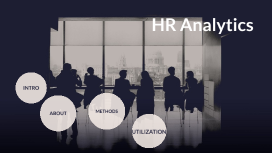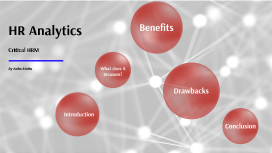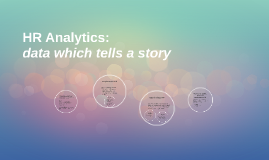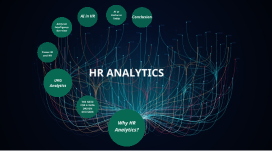hr analytics
Transcript: HR ANALYTICS İsmail Hakkı Gedik Date 1 What is HR Analytics? What is HR Analytics? HR Analytics is; systematic identification and quantification of the people drivers of business outcomes.* *Heuvel & Bondarouk, University of Twente Data-Driven HR Data-Driven HR HR ANALYTICS PROCESS HR Analytics Process Being successful in HR Analytics; Identify your problems, Determine where you will collect the data, Clear the data and set your definitions, Identify the data analysis tool, Determine the profile (Data Scientist) to analyze. Benefits Benefits & Challenges of HR Analytics • Better hiring practices, • Task automation, • Improved employee experience, • More productive workforce, • Make better decisions using data, • Gain employee trust Challenges Challenges • Finding people with the right skillset for HR Analytics, • Data cleansing and quality, • Too much data to parse or not knowing what data is most important, • Data privacy and compliance, • Proving its worth to executive leaders, • Tying actions and insight to ROI, • Identifying the best HR technologies to keep track of the data Statistics of Large-Scale Finance Company Global Case Study The common characteristics of people with high sales performance are as follows: - No grammatical mistakes in their CV, - To complete their school without leaving them, - Having experience in real estate or auto sales, - Having had success in their previous works, - Achieving success in uncertain situations, - Time planning and ability to execute many jobs at the same time. *Article of Bersin in Forbes > 4 MILLION IN REVENUE > 4 MILLION IN REVENUE When this data analysis was put into recruitment processes, the company generated more than $ 4 million in revenue.* A Study of IBM & MIT Study of IBM & MIT Companies that implemented the predictive analysis in their HR departments achieved positive results within their business. Using Predictive Analysis to Reduce Employee Turnover of Credit Suisse Bank Credit Suisse Bank The investment banking major, Credit Suisse, deployed predictive analysis; to identify employee churn determine the reasons behind employees wanting to quit. Using these insights, Credit Suisse saved an estimated $70,000,000 a year in recruiting and onboarding costs as a result of this initiative. Suggestions for Suggestions

















